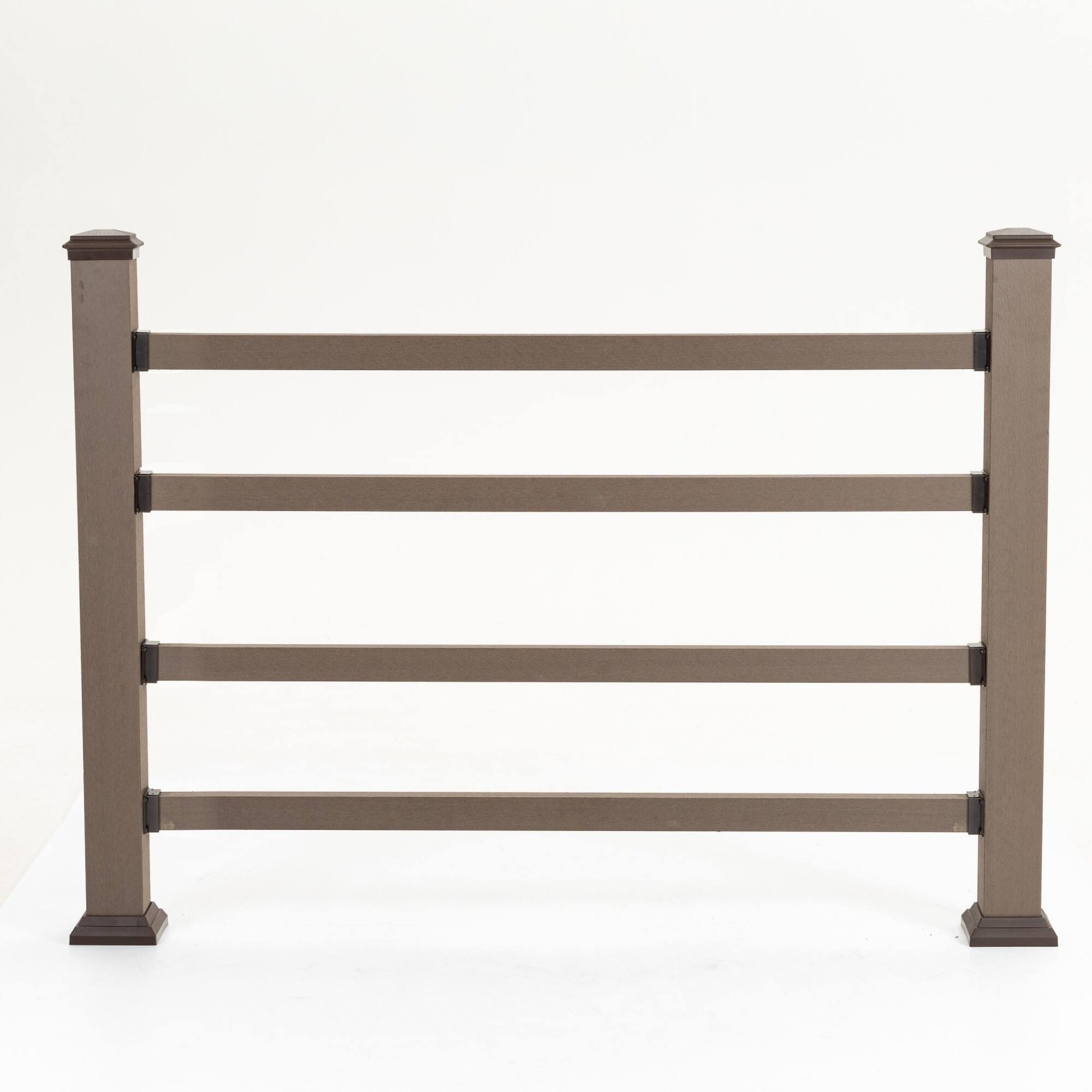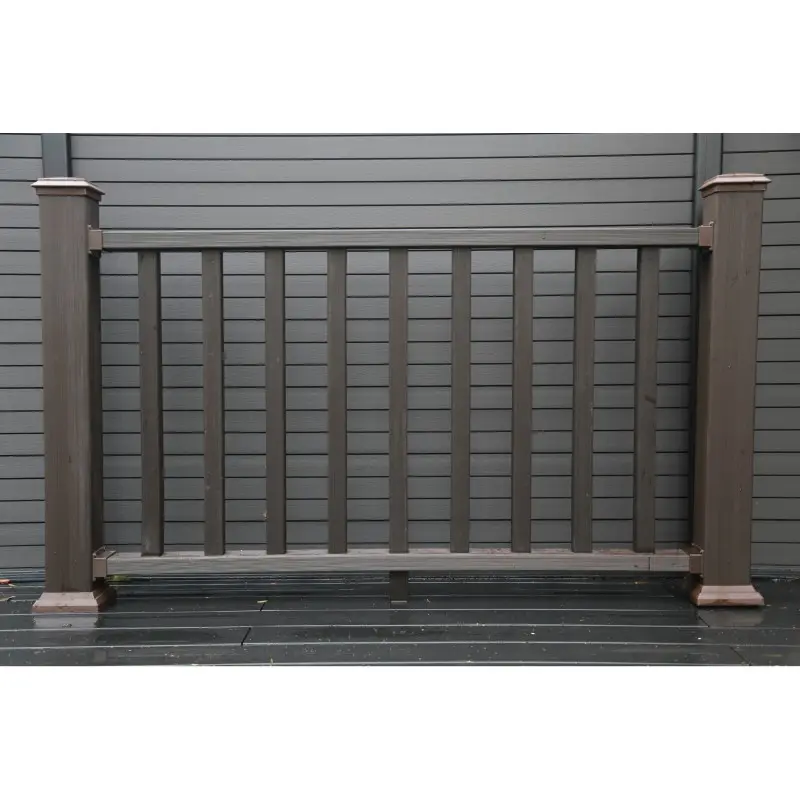Weather-resistant guardrail materials play a crucial role in ensuring safety infrastructure withstands harsh environmental conditions while maintaining structural integrity over extended periods. The selection of appropriate materials directly impacts the longevity, maintenance requirements, and overall performance of guardrail systems in various outdoor applications. Understanding the properties and characteristics of different weather-resistant guardrail materials enables architects, contractors, and property managers to make informed decisions that balance durability, cost-effectiveness, and aesthetic appeal. Modern guardrail systems must endure exposure to UV radiation, temperature fluctuations, moisture, corrosive elements, and mechanical stress while retaining their protective functionality throughout their service life.
Core Material Properties for Weather Resistance
UV Radiation Protection
Ultraviolet radiation poses one of the most significant challenges to outdoor guardrail systems, causing material degradation, color fading, and structural weakening over time. Weather-resistant guardrail materials must incorporate UV stabilizers, protective coatings, or inherent UV resistance to maintain their appearance and performance. Advanced polymer formulations often include carbon black, titanium dioxide, or specialized UV absorbers that prevent photodegradation and extend service life. The molecular structure of certain materials naturally resists UV damage, making them ideal candidates for long-term outdoor exposure without requiring additional protective treatments.
Testing protocols such as accelerated weathering tests simulate years of UV exposure to evaluate material performance under controlled laboratory conditions. These assessments help manufacturers and specifiers understand how different weather-resistant guardrail materials respond to prolonged sun exposure and predict their real-world durability. Materials that demonstrate minimal color change, surface chalking, or mechanical property degradation after extensive UV testing typically offer superior long-term performance in outdoor environments.
Moisture and Corrosion Resistance
Moisture infiltration can compromise guardrail integrity through various mechanisms including metal corrosion, wood rot, polymer hydrolysis, and freeze-thaw damage. Effective weather-resistant guardrail materials either naturally repel moisture or incorporate protective barriers that prevent water penetration. Stainless steel alloys with high chromium content form passive oxide layers that resist corrosion, while aluminum naturally develops protective aluminum oxide coatings that prevent further oxidation. Composite materials engineered with closed-cell structures minimize water absorption and eliminate the risk of internal moisture damage.
Galvanized steel components utilize zinc coatings that provide sacrificial protection, with the zinc preferentially corroding to preserve the underlying steel substrate. Powder coating and other barrier coatings create additional protective layers that seal the base material from environmental exposure. Regular inspection and maintenance protocols help identify potential moisture-related issues before they compromise the structural integrity of weather-resistant guardrail materials.
Advanced Composite Solutions
Wood-Plastic Composite Technology
Wood-plastic composite (WPC) guardrail systems combine the aesthetic appeal of natural wood with enhanced durability and weather resistance through advanced polymer engineering. These materials typically consist of recycled wood fibers encapsulated within thermoplastic matrices that provide moisture protection and dimensional stability. The manufacturing process allows for precise control over material properties, enabling the production of guarrail components that resist warping, splitting, cracking, and insect damage while maintaining the appearance of traditional wood products.
Co-extrusion technology further enhances WPC performance by applying protective outer shells that shield the core material from environmental exposure. These weather-resistant guardrail materials offer superior color retention, scratch resistance, and stain resistance compared to conventional wood or basic composite alternatives. The cellular structure of advanced WPC formulations provides excellent thermal insulation properties while reducing overall weight without compromising structural strength.
Fiber-Reinforced Polymer Systems
Fiber-reinforced polymer (FRP) guardrail systems utilize high-strength synthetic fibers embedded within resin matrices to create lightweight yet incredibly durable weather-resistant guardrail materials. Glass fiber, carbon fiber, and aramid fiber reinforcements provide exceptional tensile strength and impact resistance while maintaining flexibility under dynamic loading conditions. The non-corrosive nature of FRP materials makes them ideal for harsh environments including coastal areas, industrial facilities, and chemical processing plants where traditional materials would quickly deteriorate.
Manufacturing techniques such as pultrusion and filament winding enable the production of complex guardrail profiles with optimized structural properties and integrated mounting features. Surface gel coats and protective topcoats provide additional weather protection while offering customizable colors and textures. FRP guardrail systems typically require minimal maintenance throughout their service life, making them cost-effective solutions for applications where long-term durability is paramount.
Metal Alloy Performance
Stainless Steel Grades and Applications
Stainless steel guardrail systems offer exceptional corrosion resistance and mechanical strength through carefully controlled alloy compositions that optimize performance for specific environmental conditions. Grade 316 stainless steel, containing molybdenum additions, provides superior resistance to chloride-induced corrosion, making it ideal for marine and coastal installations. The passive chromium oxide layer that naturally forms on stainless steel surfaces self-heals when damaged, ensuring continued protection against atmospheric corrosion and maintaining the aesthetic appeal of weather-resistant guardrail materials.
Duplex stainless steel grades combine austenitic and ferritic microstructures to achieve enhanced strength and pitting resistance while reducing material costs compared to higher-grade austenitic alloys. Surface finishing techniques including electropolishing and passivation treatments optimize corrosion resistance and facilitate cleaning and maintenance procedures. Proper fabrication practices, including appropriate welding procedures and post-weld treatments, ensure that stainless steel guardrail components maintain their weather-resistant properties throughout the manufacturing and installation process.
Aluminum Alloy Engineering
Aluminum alloy guardrail systems provide excellent strength-to-weight ratios and natural corrosion resistance through the formation of protective aluminum oxide layers. Heat-treatable alloys such as 6061 and 6063 offer enhanced mechanical properties through controlled precipitation hardening processes, enabling the design of lightweight yet structurally robust guardrail components. Anodizing treatments create thick, uniform oxide layers that provide additional corrosion protection while offering opportunities for decorative coloring and surface texturing.
Architectural finishing options including powder coating, fluoropolymer coatings, and wood-grain transfer films expand the aesthetic possibilities for aluminum guardrail systems while providing additional environmental protection. The recyclability of aluminum makes it an environmentally sustainable choice for weather-resistant guardrail materials, and the material's low maintenance requirements reduce long-term ownership costs. Thermal expansion considerations must be addressed through appropriate joint design and expansion accommodations to prevent stress concentrations and maintain system integrity.

Surface Treatment Technologies
Protective Coating Systems
Advanced protective coating systems significantly enhance the weather resistance and longevity of guardrail materials through multiple layers of specialized formulations designed to address specific environmental challenges. Primer coatings provide adhesion and corrosion inhibition, intermediate coats offer barrier protection and build film thickness, while topcoats deliver UV resistance, color stability, and ease of maintenance. Multi-layer coating systems create redundant protection that ensures continued performance even if individual layers are compromised through wear or mechanical damage.
Fluoropolymer coatings such as PVDF and FEVE offer exceptional weatherability and chemical resistance, making them ideal topcoat materials for weather-resistant guardrail materials in demanding environments. These coatings maintain their appearance and protective properties for decades with minimal maintenance, justifying their higher initial cost through reduced lifecycle expenses. Application techniques including spray coating, dip coating, and powder coating each offer specific advantages depending on the substrate material, component geometry, and performance requirements.
Surface Texturing and Modification
Surface texturing techniques enhance the performance of weather-resistant guardrail materials by improving coating adhesion, reducing slip hazards, and creating self-cleaning surfaces that minimize maintenance requirements. Mechanical texturing methods including sandblasting, wire brushing, and profile rolling create controlled surface roughness that promotes mechanical bonding of protective coatings. Chemical etching and plasma treatments modify surface chemistry to enhance wetting and adhesion properties while maintaining dimensional accuracy and surface quality.
Micro-structured surfaces inspired by natural phenomena such as lotus leaves exhibit hydrophobic properties that cause water to bead and roll off, carrying away dirt and contaminants. These self-cleaning surfaces reduce the frequency of maintenance cleaning and help maintain the aesthetic appearance of guardrail systems throughout their service life. Surface modification techniques can be applied to various substrate materials including metals, polymers, and composites to optimize their weather resistance and functional performance.
Installation and Maintenance Considerations
Proper Installation Techniques
The long-term performance of weather-resistant guardrail materials depends heavily on proper installation techniques that prevent water infiltration, thermal stress, and mechanical failure. Fastener selection must consider galvanic compatibility, thermal expansion, and corrosion resistance to ensure that connection points do not become failure initiation sites. Sealants and gaskets should be compatible with the guardrail materials and provide long-term weatherability without degrading or losing adhesion over time.
Post installation and anchoring systems must transfer loads effectively while accommodating thermal movement and preventing stress concentrations that could lead to material failure. Proper drainage design ensures that water does not accumulate around mounting points or within hollow sections where it could cause corrosion or freeze-thaw damage. Installation documentation and quality control procedures help ensure that weather-resistant guardrail materials are installed according to manufacturer specifications and applicable building codes.
Preventive Maintenance Protocols
Regular inspection and maintenance schedules maximize the service life of weather-resistant guardrail materials while identifying potential issues before they compromise safety or require major repairs. Visual inspections should assess coating integrity, fastener condition, structural alignment, and signs of corrosion or mechanical damage. Cleaning protocols remove accumulated dirt, salt deposits, and biological growth that could accelerate material degradation or compromise aesthetic appearance.
Preventive maintenance activities including joint sealing, fastener retorquing, and protective coating touch-up help address minor issues before they develop into major problems. Replacement schedules for consumable components such as gaskets, sealants, and sacrificial anodes ensure continued protection of primary structural elements. Maintenance documentation tracks the performance history of weather-resistant guardrail materials and helps optimize maintenance intervals and procedures based on actual field experience.
FAQ
What factors determine the lifespan of weather-resistant guardrail materials
The lifespan of weather-resistant guardrail materials depends on several key factors including material selection, environmental exposure conditions, installation quality, and maintenance practices. UV radiation intensity, temperature cycling, moisture exposure, and atmospheric pollutants all influence material degradation rates. Proper material specification for the specific environment, quality installation procedures, and regular preventive maintenance can extend service life significantly beyond minimum design requirements.
How do composite guardrail materials compare to traditional metal options
Composite guardrail materials offer several advantages over traditional metal options including superior corrosion resistance, lower maintenance requirements, and better thermal insulation properties. However, metal systems typically provide higher strength-to-weight ratios and may be more suitable for high-load applications. The choice between composite and metal weather-resistant guardrail materials should consider factors such as structural requirements, environmental conditions, aesthetic preferences, and lifecycle costs.
What maintenance is required for different types of guardrail materials
Maintenance requirements vary significantly among different weather-resistant guardrail materials. Stainless steel systems typically require periodic cleaning and inspection but minimal other maintenance. Painted steel requires regular coating inspection and touch-up. Composite materials generally need only periodic cleaning and inspection for damage. Wood systems require the most maintenance including regular refinishing, replacement of deteriorated components, and treatment for insects or decay.
How can I ensure proper material selection for coastal environments
Coastal environments present unique challenges including salt spray, high humidity, and UV exposure that require careful material selection. Stainless steel grades 316 or higher, aluminum alloys with appropriate surface treatments, and specialized composite formulations designed for marine environments typically provide the best performance. Proper specification should consider distance from the waterline, prevailing wind patterns, and local atmospheric conditions that influence salt deposition and corrosion rates.

